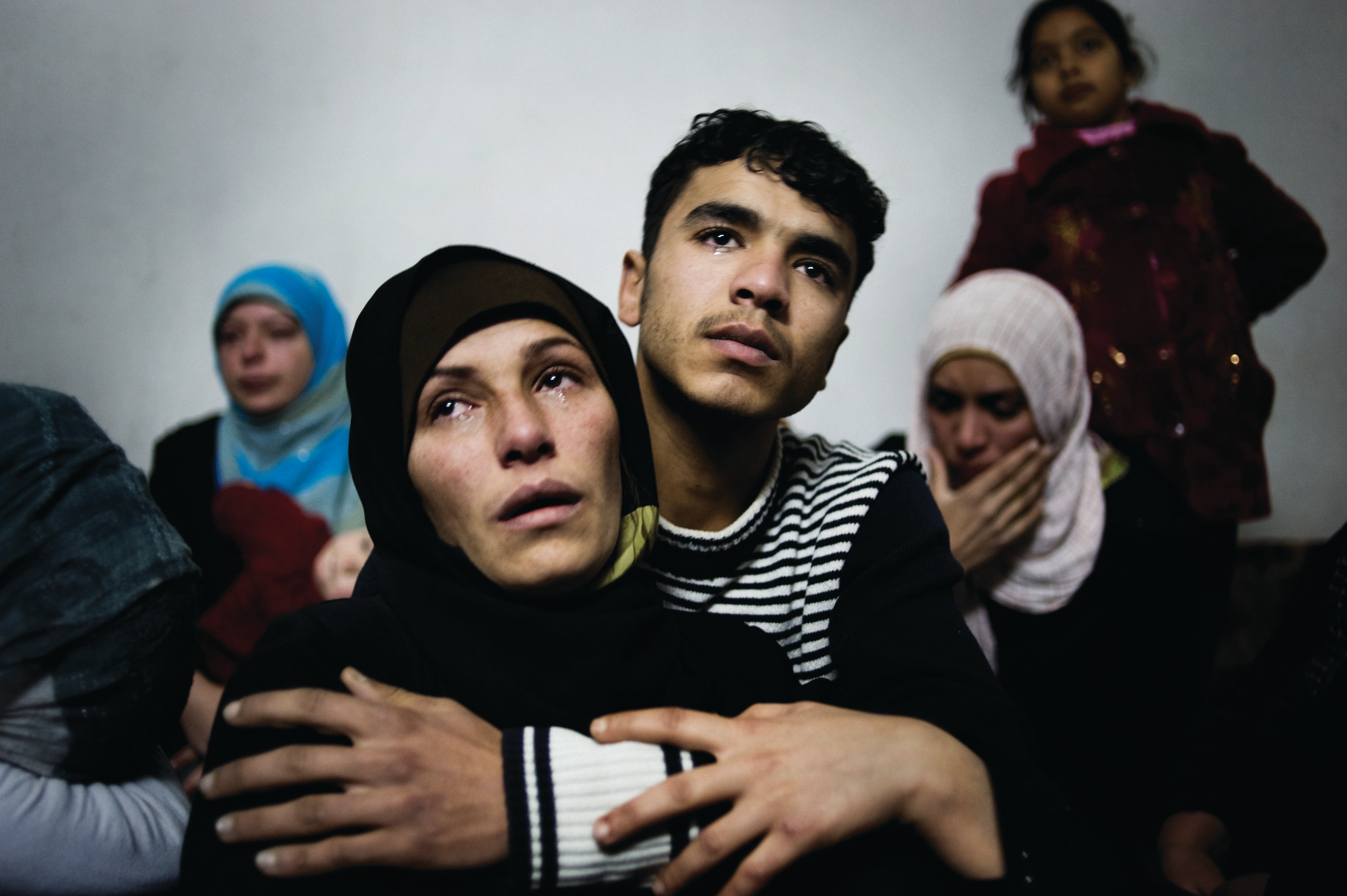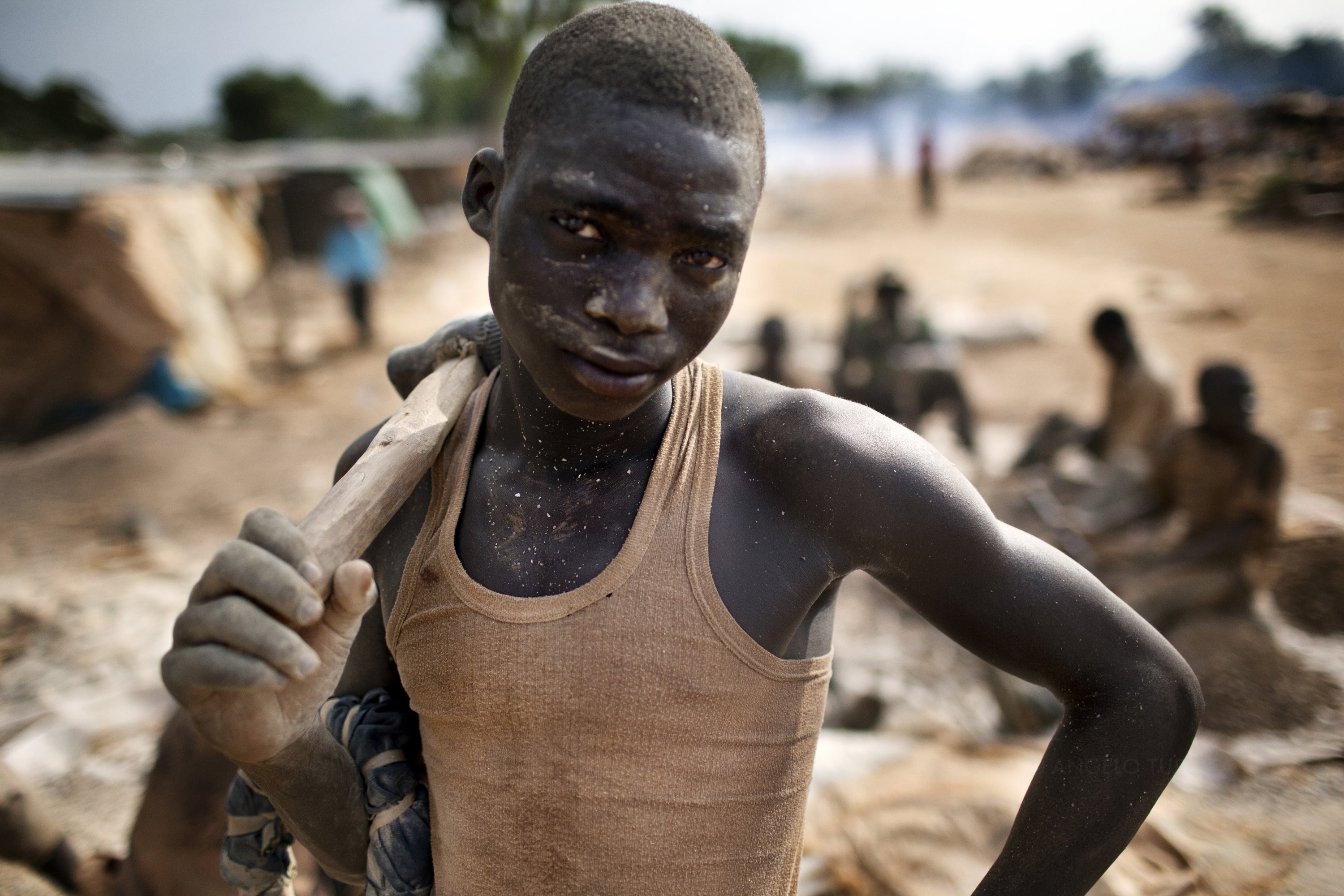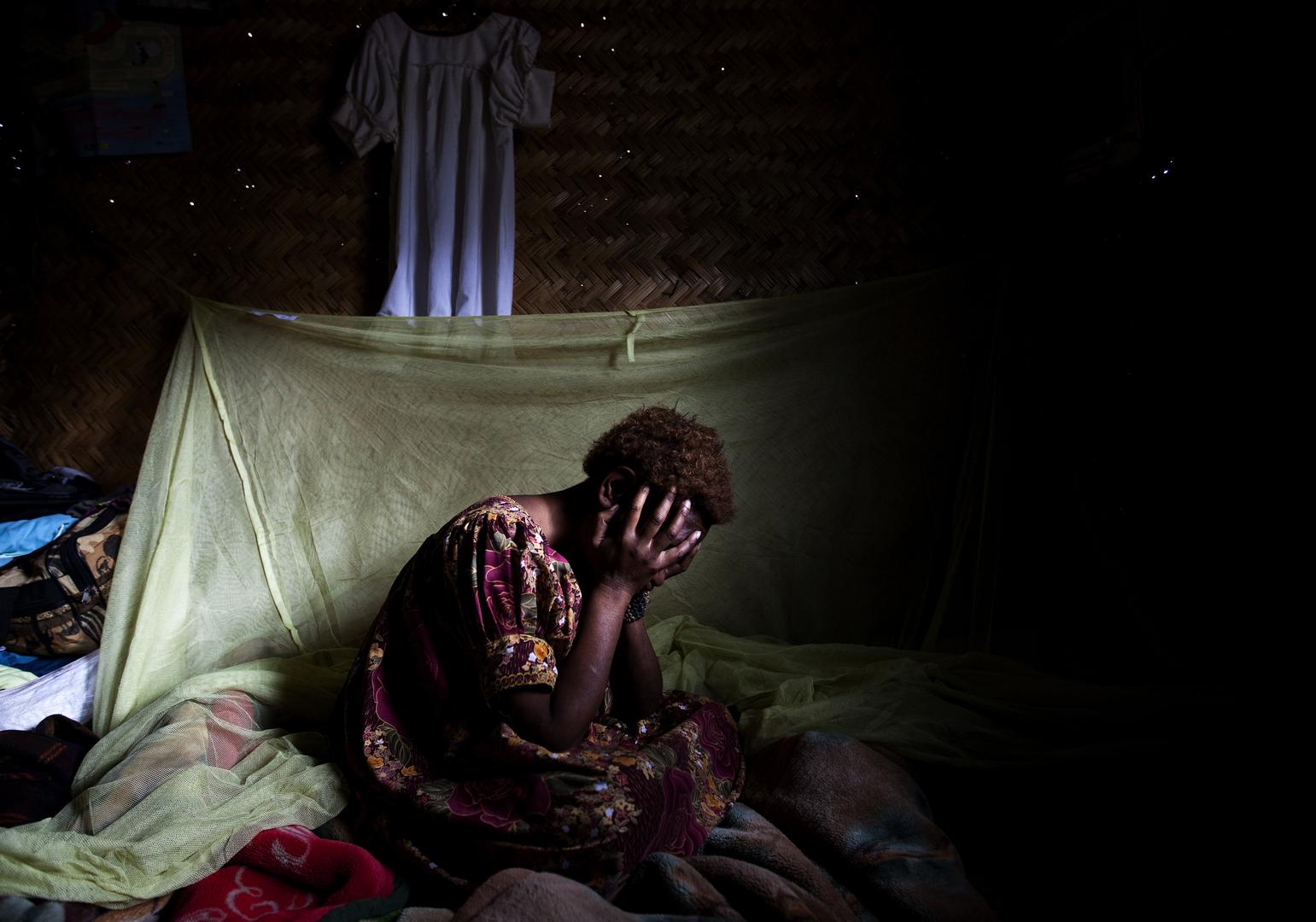The United States has a vibrant civil society and media that enjoy strong constitutional protections. The victims of abuse are typically the weakest and most vulnerable in US society: immigrants, racial and ethnic minorities, children, the elderly, the poor, and prisoners.
The US incarcerates more people than any other country. Practices contrary to human rights principles, such as the death penalty, juvenile life-without-parole sentences, and solitary confinement are common and often marked by racial disparities. Increasing numbers of non-citizens are held in immigration detention facilities although many are not dangerous or at risk of absconding. Federal prosecutions for illegal entry and reentry have escalated.
The federal government under President Barack Obama has continued some abusive counterterrorism policies, including detentions without charge at the military prison at Guantanamo Bay, and proceedings before fundamentally flawed military commissions.
Death Penalty and Excessive Punishments
In 2012, Connecticut joined 16 other states and the District of Columbia in abolishing the death penalty. Thirty-three states continue to allow its imposition. In November, California voters narrowly rejected Proposition 34, which would have abolished the death penalty in that state. At this writing, 42 people had been executed in the US in 2012. There has been a downward trend in executions since 2000.
Almost 20 years ago, California was among the first states to pass a punitive “three-strikes” law, mandating lengthy sentences for repeat offenders. In November, California voters overwhelmingly approved a ballot measure eliminating mandatory life sentences for certain nonviolent third offenses and allowing prisoners serving life for such nonviolent third strikes to seek resentencing. Massachusetts moved in the opposite direction, becoming the 27th state to enact a three-strikes law.
Long sentences have contributed to a growing number of incarcerated elderly people. Human Rights Watch’s 2012 report, Old Behind Bars, found that, between 2007 and 2010, the number of sentenced prisoners aged 65 or older grew 94 times faster than the total sentenced prisoner population during that same period. Prisons are ill-equipped to handle this aging population.
Approximately 2,600 youth offenders are serving life-without-parole sentences, but in 2012 there was significant progress towards abolishing use of the sentence for juveniles. In 2012, Human Rights Watch found that nearly every youth offender serving life without parole reported physical violence or sexual abuse by inmates or corrections officers.
In June, the US Supreme Court held mandatory life-without-parole sentences for juvenile offenders to be unconstitutional, calling into question approximately 85 percent of all juvenile life-without-parole cases in the country. In September, California enacted a law providing for the possibility of review and parole for nearly 300 youth sentenced to life without parole in the state.
There is widespread use of solitary confinement against juveniles in adult prisons and jails, often for weeks or months. In 2011, more than 95,000 people under age 18 were held in adult prisons and jails. Solitary confinement provokes serious mental and physical health problems, and undermines teenagers’ rehabilitation.
Youth convicted of sex offenses also experienced harsh treatment. The Adam Walsh Child Protection and Safety Act requires jurisdictions to register juveniles convicted of certain sexual offenses on a national, publicly accessible, online registry. Registration impacts youth offenders’ access to education, housing, and employment. Many states have similar harsh laws.
Prison Conditions
As of 2010, the US maintained the world’s largest incarcerated population, at 1.6 million, and the world’s highest per capita incarceration rate, at 500 inmates per 100,000 residents.
In May 2012, the US Department of Justice (DOJ) issued final standards under the Prison Rape Elimination Act (PREA), for the detection, prevention, reduction, and punishment of prison rape. The standards are immediately binding on all DOJ facilities. A presidential memorandum clarified that other federal agencies operating detention facilities, including the Department of Homeland Security, are also bound by PREA and must propose rules or procedures to comply with PREA.
California responded to a 2010 Supreme Court ruling that it must reduce its prison population because of inadequate medical and mental health care due to overcrowding by shifting a large number of inmates from the state prison system to county jails in a process called realignment. Realignment initially led to a sharp reduction in the state inmate population, but that drop has leveled off.
Racial Disparities in the Criminal Justice System
Racial and ethnic minorities have long been disproportionately represented in the US criminal justice system. While accounting for only 13 percent of the US population, African Americans represent 28.4 percent of all arrests. According to Bureau of Justice Statistics approximately 3.1 percent of African American men, 1.3 percent of Latino men, and 0.5 percent of white men are in prison. Because they are disproportionately likely to have criminal records, members of racial and ethnic minorities are more likely than whites to experience stigma and legal discrimination in employment, housing, education, public benefits, jury service, and the right to vote.
Whites, African Americans, and Latinos have comparable rates of drug use but are arrested and prosecuted for drug offenses at vastly different rates. African Americans are arrested for drug offenses, including possession, at three times the rate of white men.
In 2008, African American motorists were three times as likely as white motorists and twice as likely as Latino motorists to be searched during a traffic stop. In New York City, 86 percent of persons “stopped and frisked” by the police were African American or Latino, even though they represented 52 percent of the population. According to the New York Civil Liberties Union (NYCLU), 89 percent of those stopped were innocent of any wrongdoing.
Non-Citizens’ Rights
There are approximately 25 million non-citizens in the US. The government estimates that 10.8 million of them are in the country without authorization.
In fiscal year 2012, US Immigration and Customs Enforcement (ICE) deported a record 396,906 non-citizens. A dramatic increase in federal prosecutions of immigration violations and in the number of immigrants in detention has fed a nationwide detention system comprised of over 250 facilities.
In 2011, prosecutions for illegal entry and reentry into the US surpassed 34,000 and 37,000 respectively. Illegal reentry is now the most prosecuted federal crime. Many of those who are prosecuted for these crimes have minor or no criminal history and have substantial ties to the US.
Secure Communities and other federal programs involving local law enforcement play a major role in the increase in deportations. The federal government has portrayed these programs as focused on dangerous criminals, but most immigrants deported through Secure Communities are categorized by the federal government as “non-criminal” or lower level offenders. These programs may exacerbate distrust of police in immigrant communities, and thus may deter crime victims from seeking protection and redress. Some local and state governments have sought to limit the reach of these programs.
In September, ICE said it would reconsider its policies on transfers of detainees between facilities. Human Rights Watch documented in 2011 how high numbers of detainees were subjected to chaotic and frequent transfers between facilities, hampering detainees’ access to due process and family support.
Also in September, federal courts rejected parts of several state laws impacting the rights of unauthorized immigrants. In Alabama, a court struck down provisions authorizing the state to require immigration verification of children before they enroll in school, or to prohibit state courts from enforcing contracts in which one party is an unauthorized immigrant. In Georgia, a court ruled against a provision allowing the state to punish people who work with or transport undocumented immigrants. The US Supreme Court overturned several sections of Arizona’s immigrant law, though it left intact a section requiring police to attempt to verify a person’s immigration status if there is a “reasonable suspicion” the individual is in the country without authorization. This provision increases the risk that immigrant families in Arizona and other states will face abuse from local authorities.
Alabama’s immigrant law, like Arizona’s, denied basic rights to unauthorized immigrants and their families, including US citizen children.
In a positive step in June, federal officials suspended deportation of certain unauthorized immigrants who were brought to the US as children. To qualify for Deferred Action for Childhood Arrivals, immigrants must be under 30 years old, have lived in the country for at least 5 years, must not have been convicted of a serious criminal offense, and must be in school, have earned a high school diploma, or have served in the military.
Hundreds of thousands of immigrant woman and girl farmworkers face a high risk of sexual violence and harassment in their workplaces. Immigrant women often fail to report these crimes because of the lack of adequate workplace protections, and their fear of deportation or reprisals from employers.
Labor Rights
Hundreds of thousands of children work on American farms. The 1938 Fair Labor Standards Act exempts child farmworkers from the minimum age and maximum hour requirements that apply to all other working children, exposing them to work at far younger ages, for longer hours, and under more hazardous conditions. As a result, child farmworkers, most of them Latino, often work 10 or more hours a day and risk pesticide poisoning, heat illness, injuries, life-long disabilities, and death. Of children under age 16 who suffered fatal occupational injuries in 2010, 75 percent worked in crop production. Thousands more are injured each year. Federal protections that do exist are often not enforced.
In April, the Department of Labor withdrew new regulations proposed in 2011 that would have updated, for the first time in decades, the list of hazardous agricultural tasks prohibited for children under age 16. (Federal law bans hazardous work for children under age 18 outside agriculture). Several members of Congress claimed, inaccurately, that the rules would hurt family farms and agricultural training, and introduced bills to block them.
Millions of US workers, including parents of infants, are harmed by weak or non-existent laws on paid leave, breastfeeding accommodation, and discrimination against workers with family responsibilities. Inadequate leave contributes to delaying babies’ immunizations, postpartum depression, and other health problems, and causes mothers to stop breastfeeding early.
The Obama administration proposed a regulation to end the exclusion of certain home care workers from minimum wage and hour protections. These workers, most of whom are women, including many immigrants and minorities, provide essential services to people with disabilities and the elderly.
Health Policy
In June, the US Supreme Court upheld the Affordable Care Act, which significantly expands many citizens’ access to health insurance and medical care.
HIV infections in the US continue to disproportionately affect minority communities, men who have sex with men, and transgender women. Many states continue to undermine human rights and public health with restrictions on sex education, inadequate legal protections for HIV-positive persons, resistance to harm-reduction programs such as syringe exchanges, and failure to fund HIV prevention and care. Harmful criminal justice policies include laws that target people living with HIV for enhanced penalties and the use of condoms as evidence of prostitution. This practice, which Human Rights Watch documented in four major cities, makes sex workers reluctant to carry the number of condoms they need to protect themselves from disease and pregnancy, and undermines both human rights and public health.
Persons with Disabilities
The Senate Foreign Relations Committee sent the UN Convention on the Rights of Persons with Disabilities (CRPD) to the Senate for ratification in July. The ratification package has a number of reservations, including one that says US law is already compliant with the convention. At this writing, ratification appeared stalled until at least 2013.
Women’s and Girls’ Rights
The Violence Against Women Act (VAWA), the primary federal law providing legal protection and services to victims of domestic and sexual violence and stalking, faced an uncertain future. At this writing, the congressional renewal process had stalled due to disagreements over protections for immigrant victims; lesbian, gay, bisexual, and transgender (LGBT) victims; and victims on tribal lands.
Department of Defense statistics indicate that out of an estimated 19,000 sexual assaults in the military each year, only 3,192 were reported in fiscal year 2011; just 240 of those resulted in military prosecution. Recently announced initiatives to address the problem include removing investigative responsibility from frontline commanders; however, cases would remain within the chain of command.
Inadequate investigations of sexual violence are a problem beyond the military. Nationally, fewer than 20 percent of sexual assaults are reported to police, and even reported cases are not always adequately investigated. For example, Human Rights Watch research indicates that between 2009 and 2011, numerous victims who reported their sexual assaults to the police in the District of Columbia saw their cases languish after being effectively closed without investigation. Human Rights Watch previously found that forensic exams for sexual assault victims in California and Illinois sat in storage for years without being tested.
Despite dozens of lawsuits from objecting employers, a healthcare reform requirement that employers cover contraception in employee health insurance plans went into effect this year, allowing an estimated 47 million women to access contraceptives without cost. State anti-abortion laws passed in 2012 included limits on insurance coverage for abortion, medical abortion restrictions, and bans on abortion after 20 weeks of pregnancy. Laws mandating ultrasounds before abortion, which exist in eight states, encountered a public backlash when debate over a Virginia bill exposed that the proposed requirement could force women to undergo the insertion of a transvaginal probe.
Sexual Orientation and Gender Identity
Public attitudes towards gay marriage appear to be shifting. During the November elections, Maryland, Maine, and Washington State passed ballot initiatives supporting gay marriage, joining six other states and the District of Columbia in permitting same-sex marriage. It was the first time anywhere that gay marriage has been approved by popular vote. Minnesota voters also rejected an effort to ban gay marriage in that state. In February, a federal appeals court declared unconstitutional a California ballot measure that banned same-sex marriage in 2008. That ruling is being appealed to the US Supreme Court.
The Defense of Marriage Act (DOMA) continues to bar recognition of same-sex marriage at the federal level. In May, North Carolina became the 30th state in the US to include a prohibition on same-sex marriage in its state constitution. And while New Jersey’s legislature passed a bill permitting same-sex marriage, the governor vetoed it.
President Barack Obama has expressed his personal support for gay marriage, and senior US officials have made statements recognizing LGBT rights as human rights.
Yet federal law offers no protection against discrimination based on sexual orientation or gender identity. Only 21 US states and the District of Columbia have laws prohibiting employment discrimination based on sexual orientation.
Counterterrorism
On December 31, 2011, Obama signed the National Defense Authorization Act for Fiscal Year 2012 (NDAA). The act codified the existing executive practice of detaining terrorism suspects indefinitely without charge, and required that certain terrorism suspects be initially detained by the military if captured inside the US. A presidential policy directive issued in February reduced the reach of the mandatory military detention portion of the act, calling it rigid and a danger to US national security.
January 11 marked the tenth anniversary of detention of terrorism suspects at Guantanamo Bay. The NDAA reaffirmed congressional restrictions on transfer of detainees from Guantanamo, with minor changes. At this writing, no detainee has been transferred out of Guantanamo under that regime. Two Uighur detainees—to whom the congressional restrictions did not apply as their detention had already been ruled unlawful by a federal judge—were resettled to El Salvador in April. In July, in another exception to the restrictions, Ibrahim al-Qosi was returned to his native Sudan under the terms of a plea agreement in a military commission proceeding. In September, Adnan Latif became the ninth detainee to die at the facility since it opened; and Omar Khadr, only 15 when captured by the US in Afghanistan, was sent back to his home country of Canada to serve out the remainder of his eight-year sentence pursuant to a plea agreement. This brought the total population of detainees in Guantanamo to 166.
A one-year deadline to establish a system of periodic review for detainees held at Guantanamo expired in March. The Defense Department did not conduct any reviews, but did issue regulations outlining the procedures. The Defense Department also sought to limit detainees’ access to counsel by creating a new set of rules that would have been overseen by the military commander at Guantanamo; in September, a federal judge ruled the new counsel access rules unlawful. In November, the US filed a notice of appeal.
On August 30, the Justice Department closed without charges its investigation, led by special prosecutor John Durham, into the deaths of two detainees in secret CIA custody. The investigation had originally encompassed the cases of approximately 100 detainees who had been held in CIA custody, but in 2011 the Justice Department narrowed its focus to only two.
The US unlawfully transferred at least 15 Libyan citizens back to Muammar Gaddafi’s Libya from 2003 to 2006. The US had detained, interrogated, and tortured or otherwise ill-treated several of them for years before sending them back. Two former detainees alleged they had been subjected to waterboarding or other water torture, calling into question the US assertion that only three detainees had ever been waterboarded. None had been approached by US officials in connection with Durham’s investigation.
Five men accused of plotting the September 11, 2001 attacks were arraigned in a military commission in Guantanamo in June. Pre-trial proceedings before a military commission continued against Abd al-Rahim al-Nashiri, accused of plotting the bombing of the USS Cole in Yemen in October 2000. The Defense Department issued preliminary charges against an additional detainee.
Following exposure of the New York Police Department’s (NYPD) broad surveillance of mosques, Muslim student groups, and Muslim-owned businesses, NYPD Assistant Chief Thomas Galati testified in court that no information from the program produced a lead in a terrorism investigation.
Through speeches and media reports, US officials sought to explain US policy on targeted killings in Pakistan, Somalia, and elsewhere by unmanned aerial vehicles, or drones. They said the policy was to engage in targeted killings only if traditional law enforcement means were unavailable, although they relied on both the laws of war and self-defense as legal bases for targeted killings.
John Brennan, Obama’s chief counterterrorism advisor, asserted that targeted killings were justified against anyone who is “part of” al Qaeda, the Taliban, or associated forces, even in situations far from a recognized battlefield. This definition, if applied, would exceed the scope of targeting permitted under the laws of war. CIA involvement in many drone strikes has meant little or no accountability for possible laws of war violations. Media reports described President Obama as personally approving each targeted killing conducted by the US military.




